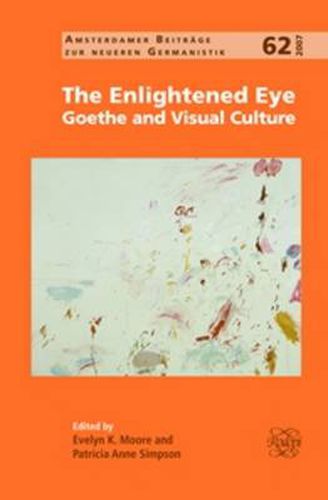Readings Newsletter
Become a Readings Member to make your shopping experience even easier.
Sign in or sign up for free!
You’re not far away from qualifying for FREE standard shipping within Australia
You’ve qualified for FREE standard shipping within Australia
The cart is loading…






Poets, painters, philosophers, and scientists alike debated new ways of thinking about visual culture in the long eighteenth century . The essays in The Enlightened Eye: Goethe and Visual Culture demonstrate the extent to which Goethe advanced this discourse in virtually all disciplines. The concept of visuality becomes a constitutive moment in a productive relationship between the verbal and visual arts with far-reaching implications for the formation of bourgeois identity, pedagogy, and culture. From a variety of theoretical perspectives, the contributors to this volume examine the interconnections between aesthetic and scientific fields of inquiry involved in Goethe’s visual identity. By locating Goethe’s position in the examination of visual culture, both established and emerging scholars analyze the degree to which visual aesthetics determined the cultural production of both the German-speaking world and the broader European context. The contributions analyze the production, presentation, and consumption of visual culture defined broadly as painting, sculpture, theater, and scientific practice. The Enlightened Eye promises to invest new energy and insight into the discussion among literary scholars, art historians, and cultural theorists about many aspects of visual culture in the Age of Goethe.
$9.00 standard shipping within Australia
FREE standard shipping within Australia for orders over $100.00
Express & International shipping calculated at checkout
Poets, painters, philosophers, and scientists alike debated new ways of thinking about visual culture in the long eighteenth century . The essays in The Enlightened Eye: Goethe and Visual Culture demonstrate the extent to which Goethe advanced this discourse in virtually all disciplines. The concept of visuality becomes a constitutive moment in a productive relationship between the verbal and visual arts with far-reaching implications for the formation of bourgeois identity, pedagogy, and culture. From a variety of theoretical perspectives, the contributors to this volume examine the interconnections between aesthetic and scientific fields of inquiry involved in Goethe’s visual identity. By locating Goethe’s position in the examination of visual culture, both established and emerging scholars analyze the degree to which visual aesthetics determined the cultural production of both the German-speaking world and the broader European context. The contributions analyze the production, presentation, and consumption of visual culture defined broadly as painting, sculpture, theater, and scientific practice. The Enlightened Eye promises to invest new energy and insight into the discussion among literary scholars, art historians, and cultural theorists about many aspects of visual culture in the Age of Goethe.